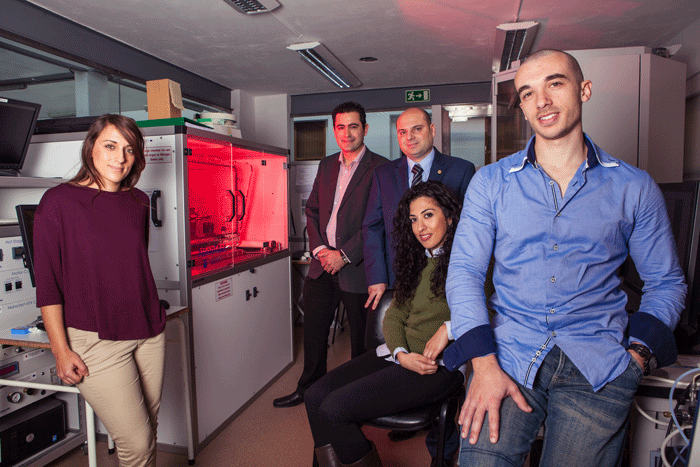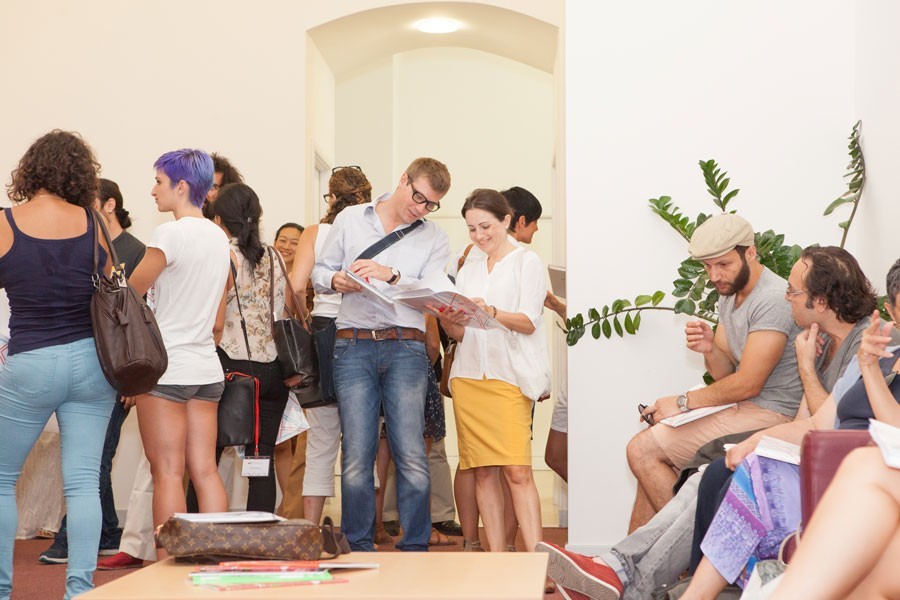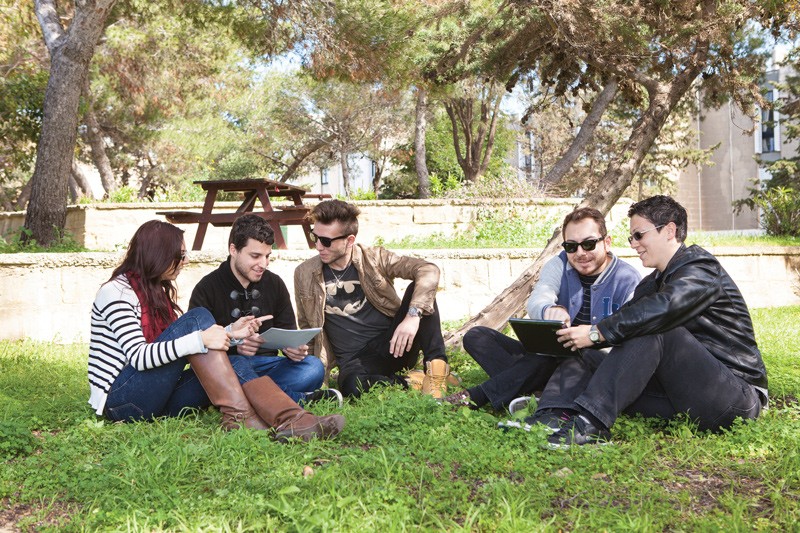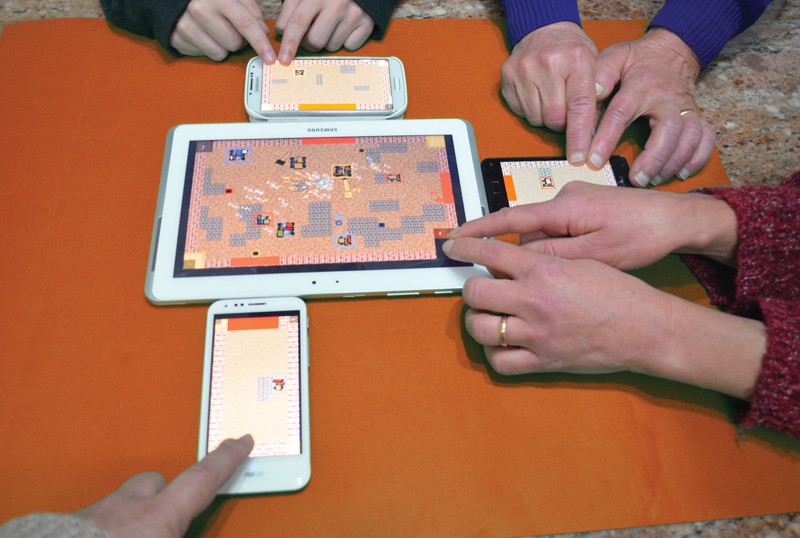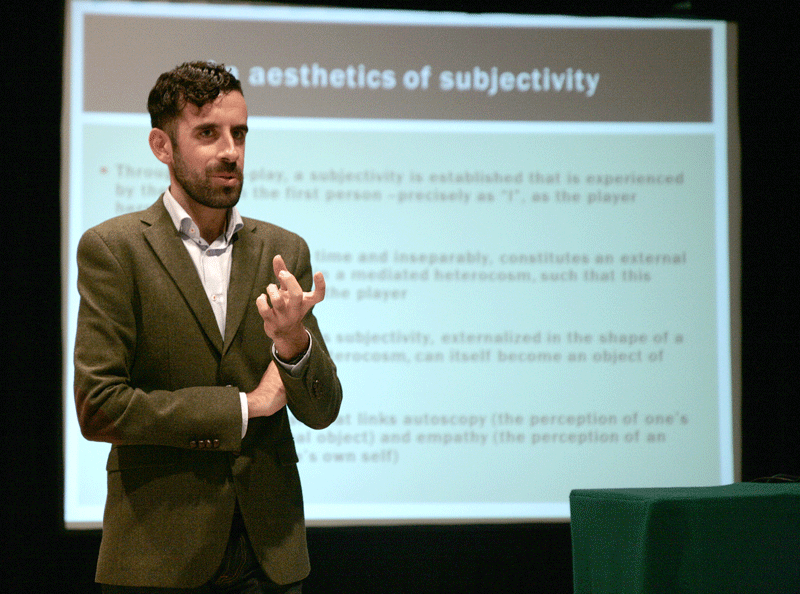Let us fish4tomorrow
All over the world, governments and stakeholders are trying to cope with overfishing. Overfishing is when too much fish is caught which leads to an overall degradation of the marine ecosystem. It is the non-sustainable use of ocean resources. Words by J.D. Farrugia
Continue reading
Lighter and Stronger Planes
Bonnie Attard talks about the aerospace industry and how it can be improved.
Placing Cultural Research on the Map
The Valletta 2018 Foundation recently started a five-year research study to evaluate and monitor the European Capital of Culture (ECoC) project in Malta. The process combines both quantitative and qualitative approaches to collect data that will be communicated to the general public and interested stakeholders. This research will provide feedback to help fine-tune or correct the Foundation’s operations. The process aims to provide a local model for research in culture and the creative sector in order to encourage more cultural research after 2018.Continue reading
Social Wellbeing Policy at University?
University can be incredibly stressful. Staff perform high level work with plenty of academic responsibilities, while balancing a private life and leisure time. The number of students at University is rising every year. For academic and support staff this means a more intensive workload, pressure, and stress. For students it is the pressure of attaining good results, maintaining relationships, and other social and emotional wellbeing issues, such as coping with peer pressure, struggling with deadlines, and worries about the future. Numerous studies suggest that examinations negatively impact on student health and wellbeing. Some coping strategies and time management programmes have evolved at the University of Malta, for example by the University Chaplaincy. Such well-meaning initiatives are good and do good, but tend to happen sporadically and around examination time.
Many University of Malta students balance multiple identities. They often fall outside the typical demographic of an 18-year-old sixth form school leaver. Our students come from diverse socio-economic backgrounds, and may be studying full-time or part-time, with a variety of life roles: mature students, women with care responsibilities, persons challenged by disability or facing problems due to sexual orientation. Whatever the situation in life, each diverse identity places increased demands upon the students’ time and private life. These demands influence their University experiences, study perceptions, and learning style. Their peers might treat them differently due to their background.
“A social wellbeing policy will help foster confidence in its approach to academic learning, and to eliminate discrimination in favour of a more inclusive learning environment”
Besides worries about assignment deadlines and writing exams, many students are also in employment. I am not sure this trend is in line with University of Malta regulations, nevertheless, that is the situation. Students also worry about future prospects with no guarantee of secure employment after finishing their studies. So it is not only academic concerns that come in the way of student social wellbeing, and these may lead to high levels of stress, anxiety or frustration, depressed mood, difficulties with time management, procrastination, poor concentration, withdrawal from friends or family, or physical symptoms such as headaches, sleep problems, and exhaustion. University life presents numerous stress factors that may trigger off mental health difficulties.
Students experiencing stress are normally recommended psychological intervention and counselling, which may be beneficial for extremely stressed students. However, research suggests that physical activity helps improve mental health and wellbeing. The University of Malta, through its Work Resources Fund, promotes cycling through the Green Travel Plan. The initiative is more about sustainability and the environment, apart from a solution to the parking problem. However, cycling does improve our mental health and wellbeing, and is a free personal de-stressor by taking our mind off work or study, and leads to healthier lifestyle choices. 
A social wellbeing policy for University will help foster confidence in its approach to academic learning, and to eliminate discrimination in favour of a more inclusive learning environment. Indeed, the principles of equality and diversity such as gender or disability are essential for a true understanding of social wellbeing, and these same principles need to be included in our University’s policy document and implemented in practice. Diversity in a dynamic, intellectual environment enriches professional and educational experiences for both staff and students.
Diversity on campus is needed and important for a healthy University. Internationally, social wellbeing on campus is being promoted through an organisational structure embedded into the ethos, culture, policies, and daily practices of a university. A social wellbeing policy includes an improved occupational health and safety system, and a commitment to address mental wellbeing, physical inactivity, unhealthy eating and substance misuse. The University needs constant commitment to positively influence the life and work of all staff and students.

The University is encouraged to guard the integrity of its communication system. Collaboration and open communication fosters conversations and relationships necessary to bring about social wellbeing. The communication process needs to be trusted and confidential for team spirit and social wellbeing. For instance, I would strongly argue for an email policy that discourages unnecessary use of bcc in emails, as the practice of not telling the original addressee is unethical and downright deceitful.
The University of Malta could establish itself as a national contact point on the European Network for Health Promoting Universities (see www.eurohpu.aau.dk). It would commit the University to place social wellbeing high on its policy agenda. A working document published by the World Health Organisation Regional Office for Europe provides guidance on how to set up and develop a health-promoting university project, which would enhance and protect the social wellbeing of all staff and students.
Finally, I would also suggest an exploratory research study about aspects of university life, stress factors in teaching and learning activities, and how these impact on individual experiences. The aim is to understand the general quality of life, and how this can be improved for an informed social wellbeing policy document at the University of Malta.
This article is based on a paper Camilleri-Cassar presented at a seminar organised by the Faculty for Social Wellbeing in October 2013.
Read more here:
– Carroll, A. (2011) ‘Exploring the link between equality, diversity and wellbeing.’ In Marshall, L. and Morris, C. (eds) Taking Wellbeing Forward in higher education: reflections on theory and practice, University of Brighton Press.
– Hagarthy, D. and Currie, J. (2012) ‘The Exercise Class Experience: an opportunity to promote student wellbeing during the HSC’, Journal of Student Wellbeing, vol. 5(2):1-17.
– Hall, C., Ramm, J. and Jeffery, A. (2011) ‘Developing the University of Brighton as a Health Promoting University: the story so far.’ In Marshall, L. and Morris, C. (eds) Taking Wellbeing Forward in higher education: reflections on theory and practice, University of Brighton Press.
– UniHealth 2020: Mission Statement, www.eurohpu.aau.dk
An Automatically Tailored Experience
Digital games need to keep players engaged. Since games are interactive media, achieving this goal means that game designers need to anticipate player actions to create a pre-designed experience. Traditionally, developers have achieved this by restricting player freedom to a strict set of actions thereby curating player experience and ensuring the fun factor. However, games are taking a different route with more users making their own content (User Generated Content, UGC) through extensive creativity tools which make it hard to predict player experience.

To overcome these challenges Vincent E. Farrugia (supervised by Prof. Georgios N. Yannakakis), merged game design and artificial intelligence (AI). He developed a software framework for handling player engagement in environments which feature user generated content and groups. The three pronged solution tackles problems during game production, playing the game itself, and making sure the framework is sustainable. To maintain engagement within groups he analysed data for a particular person within the group but also patterns common across the whole group. Farrugia created software tools, autonomous AI aids, and tools to test and support the framework.
The software framework is made up of inter-operating modules. Firstly, an engagement policy module allows designers to specify theories to express their vision of positive game engagement. Player modelling then shapes this backbone to specific player engagement needs. The module can autonomously learn from player creations as reactions to game stimuli. Individual and group manager modules use this mixture of expert knowledge, AI learnt data, and player game-play history to automatically adapt game content to solve player engagement problems. This procedural content generation (PCG) is tailored for a specific player and time.
The framework’s abilities were showcased in a digital game also developed by Farrugia. Various technologies were incorporated to encourage player creativity in group sessions and to enhance networking. The setup also allowed the AI to quickly learn from each player via parallelism. Initial testing used a simulated environment with software agents. Preliminary testing on real players followed. The simulation was through a personality system to validate the underlying algorithms under various conditions. The resulting diverse game-play styles provide suggestions for AI model improvement. Farrugia is enthusiastic about future work for this AI framework and giving developers better tools to allow player creativity to flourish while maintaining positive game-play experiences.
This research was performed as part of a Master of Science degree at the Institute of Digital Games, University of Malta. It was partly funded by the Strategic Educational Pathways Scholarship (Malta), which is part-financed by the European Union—European Social Fund (ESF) under Operational Programme II—Cohesion Policy 2007—2013, ‘Empowering People for More Jobs and a Better Quality of Life’.
Smaller, Faster, and just as pretty
Video streaming uses a lot of bandwidth. Internet service providers can either limit bandwidth or provide more. To bypass this problem newer encoders aim to compact video into smaller packages, to keep the same video quality but a smaller size.
The problem is the variety of video devices available that range from mobiles, tablets, and high definition TVs. This diversity results in various different video transmissions being needed. To avoid encoding the same sequence several times and reduce the traffic over a network, video coding called H.264/Scalable Video Coding (SVC) was introduced. This type of video coding allows a single stream to encode for time, space, and quality. This technology saves bandwidth. SVC is expected to become the standard for Internet streaming. The only thing holding it back is the need for a complex encoder.

Kurt Abela (supervised by Dr Ing. Reuben Farrugia) proposed the use of a Graphics Processing Unit (GPU) based encoder to speed up the encoder. The Block Motion Estimation (BME) module within SVC takes up the bulk of the total encoding time in standard H.264/AVC. Abela designed certain modules to be optimised for NVIDIA GPUs. Through an asynchronous programming model, the video encoder could be run simultaneously on the CPU (Computer Processing Unit) and GPU. By using this novel encoder, encoding was sped up at most 436x times, when compared to a reference model, with no loss in quality. The encoder was sped up even more with further improvements to allow real-time HD video encoding.
This system is much cheaper and easier to use than leading alternatives. GPUs are very cheap and already found in most computers. Further developments on GPUs could soon see them replace more expensive encoders in datacentres.
This research was performed as part of a Masters of Science in Information and Communication Technology at the Faculty of Information and Communication Technology, University of Malta. The research is partially funded by the Strategic Educational Pathways Scholarship Scheme (Malta). The scholarship is part-financed by the European Union—European Social Fund, under Operational Programme II—Cohesion Policy 2007–2013, ‘Empowering People for More Jobs and a Better Quality of Life’.
Literature, Philosophy, and Games
Daniel Vella shares his passion for game research
Plan to Live
Can planning really sustain us? Should we plan to survive or is project planning simply there to overcome obstacles when we are faced with them? Dr Rebecca Dalli Gonzi writes about a group of project management M.Sc. students who she asked to prepare a project plan. During their project students suddenly faced an unexpected turn of events. They were asked to counteract the problem and face the challenges that they encountered. This is their story
Planning is constant action; it never stops. If you are moving to a new house or country, you probably know what this means. Planning is pervasive, but can it get out of hand? What does planning a gap year mean? Do you plan every single minor detail or do you let loose to enjoy some spontaneity? If, for example, a couple is turning a shell apartment into a home it would involve a lot of tasks, planning leave in advance, and chasing the architect. They just might give up when a book shelf cannot get through the door. If we can plan to live, how would it help us get out of a rut when things really go wrong?
Managing your life is not that different to managing a project. When you manage a project you need a flexible plan that can meet the unplanned changing demands that life hurls at you. We live in a time when the efficiency of a service or project is based upon its ability to meet change or increasing demands. Would a project plan ensure that your plans run smoothly even when your life path starts changing its course?

Project managers cannot always foresee every eventuality when planning and managing a project. Once a project is underway many unexpected events can affect project target dates and resources. Planning at its simplest would mean better management and more knowledge, while at its most complex, it could mean more peace of mind. Trying to plan a complex project without a plan is like trying to cross the Pacific Ocean without a navigation system.
Positioning your project within vulnerable situations during the initial planning stages means your team can generate ideas develop creative solutions, and have a solid idea about the resources they have, time schedules they need to stick to, and budgets. This is exactly what helped Rita Sant manage change during an unexpected turn of events as soon as her project was launched.
Plan for Health
Sant designed a healthcare concept for homebound patients called ‘SMART At HOME’. It offered a combination of home health and community based services. She carried out in-depth research to come up with the right strategy, marketing analysis, project milestones, and deployment plan. Things seemed perfect on paper. Yet she ran into a game changer. Shortly after the project was launched, a competing company called HomesforYou was set up. It threatened to put her project on hold. HomesforYou offered similar concepts that which her project sponsors had in mind. However, Rita and her team had engineered some alternate options before the actual launch to keep the company ahead of the competition. Putting the project in a vulnerable position through an in-depth SWOT analysis (analysis of the strengths, weakness, opportunities, and threats of a project) helped show the project sponsors where their focus should be. Her focus was primarily on selecting target markets and helping attract new customers. Sant was able to direct her team towards the right networks. She identified gaps in the south of Malta, and worked directly with doctors and insurance providers to bring in new customers.
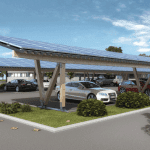
Sometimes, we are so taken up by our projects that we fail to see the obvious, to question the challenges whilst assuming we have already envisaged the end result. Project planning helps identify areas of weakness through tools like PESTEL analysis (analysis of political, economic, social, technological, environmental and legal factors that impact business), SWOT analysis, performance testing to verify strategies (plan workability), design of project think tanks, project recovery planning, contingency planning, and risk analysis (amongst other research areas). There is a lot of research behind project management.
Plan for Energy
Areas in the project that could have been overlooked suddenly become crucial. Sometimes being realistic is crucial to success. Another student, Joseph Borda, immediately received a notice that should his project exceed the proposed budgets the project sponsors would incur heavy fines. Borda was clear with his ideas from the start. Developing the power engineering workforce for the future is what he had in mind. His design of a solar panel array on the Malta International Airport car park would mean the generation of just enough energy to supply the airport. Proper time scheduling ensured that the project would be delivered within the specified time-frames. This could only work together with a proper team organisational structure and pre-designed hierarchical task network, which is the approach to automated planning where dependency among actions is given in the form of a network. A well-researched proposal helped Borda envisage proper scheduling to ensure the project was delivered within the specified time objectives, together with the team organisation structure and task hierarchies required to complete the task in time. Could a project schedule really have helped Borda stick to his time-frames? A project’s life or death hinges on its delivery date. Incurring fines meant that the project was narrowed down to a critical selection of what areas of the project had to be done in time.
“A solar panel array on the Malta International Airport car park would mean the generation of just enough energy to supply the airport”
The schedule alone would not have been a guarantee to a successful outcome. The initial stages of project research helped him and his team realise that the costings report for mounting and installation of the array was heavily over-priced. The project schedule helped mitigate the over-budget fines through the planning of phased installations and so areas that were going to be over-budget were shifted into a secondary phase. Typical project management requires attention to time, cost and quality. Once restrictions appear in one area, other areas begin to shift to accommodate new demands.
Having project management principles in place means there is a greater chance of fulfilling your objectives within the overall strategy and facilitating diagnosis of different situations as they occur. Just like captains need chart plotters or radars for distance and bearing to be able to manoeuvre ships in the worst conditions, so project managers use Gantt charts (a type of bar chart used to illustrate a project’s schedule) to help manoeuvre projects through time. Detailed planning helps translate business objectives into deliverables, provide a list of resource requirements, and a realistic assessment of project time-scales. Control measures can also be used to ensure there are no delays in target dates or to help identify team members who are not being productive.
Plan for Success
Measures of project progress can also be used to indicate when things are not moving as planned. Marc Spiteri decided to incorporate this approach into his project plan to meet a specific target: managing the Malta national rugby union team to qualify for the Rugby World Cup. Spiteri chose sports engineering as his field of study.
Spiteri’s primary objectives were to promote sports locally and to increase Malta’s appeal as a destination for sports tourism. The management plan was designed to operate on a three-point plan: first, having funding mechanisms in place for potential stakeholders and sponsors to bring in further investments; second, training and game planning aimed to work with the national team chosen to aid the organisational requirements for training camps and competitive games; third, a marketing strategy to tap into the local resources.
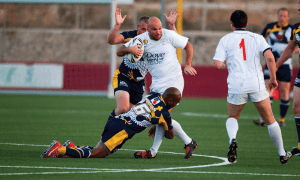
However, Spiteri was faced with a difficult challenge. Sponsorship for his project plan was threatened to be reduced if specific targets were not reached. Spiteri had knowledge and insight at the planning stage to moderate the negative effects of this cut. During planning he was able to set key performance indicators in areas of finance, training, competition and markets as part of the project design. The performance indicators allowed him to set targets to reach his ambitious goal. Rather than add a measure of control as an after-thought, he was able to integrate this as a whole concept. This meant that significant changes or shortcomings would be assessed against a measurement system, allowing a prompt response to take place with the significant action.
Plan for Death
Project control helps to ‘diagnose’ issues, plan for tackling weaker areas and adjust quickly to changes. It is normal for the team to assume that everything will work out well in the end but unpredictable behaviours, unfortunately, do happen. A lack of ownership can cause as many problems as unscheduled timing of events or project delays. A project plan gives the team the ability to envisage areas in which people conduct their activities and carry out their responsibilities. The more prepared the team is (in terms of knowledge and know-how of project plan), the quicker the recovery period. Planning is also useful as a tool when it is used to focus and highlight project needs to those involved. This is of particular importance when a project manager has to suggest different solutions to his or her client. Johann Farrugia was particularly good at providing a number of solutions for his concept of a digital cemetery when he had a major on-site problem with humidity.
“Information in cemeteries is handwritten meaning that some of the oldest records are today hardly legible. This is why cemeteries need an IT system to meet today’s needs”
Cemeteries are sacred, emotional spaces but also witnesses of human history. Information in cemeteries is handwritten meaning that some of the oldest records are today hardly legible. This is why cemeteries need an IT system to meet today’s needs. Farrugia identified the needs of all the different groups of people who make use of or work at a cemetery and figured out a system that allowed the public to request information easily. Through the website, staff and undertakers could access all the information they needed about gravesite location and burial details.
Farrugia faced problems with the testing system. Extreme humidity was interfering with the IT infrastructure limiting system usage. However, he integrated alternatives as part of his project planning phase thus being able to suggest solutions to his stakeholders and project investors. He was able to locate a secondary location system for supporting the project, thus eliminating completely the location of IT structures on-site. He also factored costings for any added insulation works required to counteract the problem and sought alternative zones that suffered from less humidity within the cemetery.
In this case, since the unexpected problem arose at an early stage, the project manager could be flexible in his planning, allow for change, and bring in alternate ideas to deal with these issues. Having considered the options beforehand meant that he could reduce the impact of a sudden major change.
In some cases, external events can trigger unexpected time delays. At times it can appear impossible to finish a project punctually, especially when there are delays in materials or suppliers. Sometimes a schedule should be consistent with your experience from previous projects. Your main focus should be on getting your critical requirements completed while avoiding distractions. The project management plan is critically dependent on the people who run it, design it, create it, and implement it. Moreover, increases in dependences increase time-frames.
Plan for Sustainability
Time-frames can quickly overrun when introducing sustainable measures into a residential development. Another student, Joslyn Magro, was keen to integrate into her project grey water reservoirs used to hold second class water for domestic use including lavatory use and landscaping photovoltaic panels, double glazing, and landscaping works. Sustainability has been an evolving theme to encourage environmental responsibility and promote intelligent decision- making with respect to energy use. Bad weather delayed the required materials that were being imported and this set the project back by a month.
By using a Gantt chart, Magro saw the negative effects of this delay. It would impact other installations and works. To reduce the burden, she scheduled architectural detailing and structural elements to run in parallel. This would reduce the dependency on strict delivery dates.

In her project plan she had also considered sourcing from different suppliers so she was able to negotiate costs affected by the delays. Once the materials were delivered on site, she could also introduce secondary teams of labourers to make up for the one-month back log. Costings saved during the delay, were used on a double-managed team unit. In her case, this may have proved to be the winning strategy as managing the on-site team as best as possible would help to counteract any further setbacks.
Taking advantage of constraints is the best way in project planning when possible. Projects revolve around expectations so it is better to envisage opportunity rather than to try control an event. Turning a shell apartment into a home might sound like a simple project in comparison to the ones discussed earlier but the problems would, theoretically, be very similar. Delays, supplier changes and exceeded budgets would surely impact your strategy along the way. Having strict milestones might be useful. It is not always necessary to consider worst-case scenarios but do consider carefully how much risk is actually acceptable. Most importantly, do not try to solve the problem, solve the cause.
This article covers some work of the first cohort of students enrolled in the M.Sc. in Project Management launched by the Department of Construction and Property Management, Faculty for the Built Environment, University of Malta. The diversity of projects reflects the range of situations in which project management skills are being applied.
Why so Serious?
How do you help school children handle fights, bullying, and other conflict properly? You build a game, of course, and you let children take on different roles in a village. But how does that lead to resolving conflicts? Ashley Davis met researchers Prof. Rilla Khaled and Prof. Georgios N. Yannakakis to find out more
Do you chuckle at the thought of a serious game? The phrase is an oxymoron. How can a game be serious? Games are meant to be fun, frivolous, a way to pass the time. Or else you sometimes hear that games are anything but frivolous. That video game violence in particular is a threat to social order. The idea that games can be used to advance human understanding about the world, and that they can help us to teach, train, or motivate people in some way, is something that still needs to enter our mentality.
Designing games to explore research questions and to solve real world problems is actually a very important aspect of games research, an area of applied research that now has a strong presence at the University of Malta with the establishment of the Institute of Digital Games. Researchers from the Institute work on European-funded projects to create games that tackle serious problems affecting children and adults alike.
Village Voices has been voted the best learning game in Europe at the 2013 Serious Game Awards
Prof. Rilla Khaled and Prof. Georgios N. Yannakakis are two researchers now based at the Institute of Digital Games who work on serious game projects. Khaled’s work focuses on serious game design, while Yannakakis is a specialist in artificial intelligence and computational creativity. Computational creativity tries to build upon the latest technological innovations in human–computer interaction that enable computers to act intelligently to some aspects of human beings. These two areas, game design and game technology, represent a large part of the teaching and research strengths of the Institute.
One game that Khaled and Yannakakis recently helped develop is Village Voices which has been voted the best learning game in Europe at the 2013 Serious Game Awards. It was developed as part of the SIREN project, an FP7-funded interdisciplinary consortium made up of researchers from Malta, Greece, Denmark, Portugal, the UK and the US, along with Serious Games Interactive, a Danish Games Studio.
Let’s take a look at what makes a serious game and think about what made the project a success and what didn’t work so well.
The serious side of Village Voices aims to help school children learn conflict resolution skills. Players take on the role of one of four interdependent villages that are situated in a farm setting and given various quests to complete. Sitting side-by-side at separate computers, they may collaborate, share resources and help each other, or they may spread rumours and steal from each other. Much like any playground setting, children can play nicely, or they can be bullies.
The purpose of the SIREN project was to apply the latest advancements in game technology to the creation of serious games. The brief focused on innovations in procedural content generation, an area of artificial intelligence that automatically builds game elements like game levels or quest structures that would otherwise need to be designed manually. Another part of this innovative technology is detecting the emotions of players. Physiological responses can be measure through various tech like Electroencephalographic (EEG) sensors that can be used to detect a person’s emotional state directly by reading their brain’s electrical signals. Virtual agents were another technology that interested the research team. These agents are believable non-player characters that interact with the player with perceived intelligence.
The idea was to then create a game that would adapt to player behaviour, using emotion recognition tools to create an individual experience for each player. The decision to focus the game on teaching children about conflict resolution came later. Rather than to create a game about bullying behaviour, which is what a lot of people think of when they picture conflict between children, the research team wanted to explore the kinds of everyday conflicts that take place in school-yards. Friendship disputes, differences in opinion, and arguments over the possession of classroom items might seem trivial to adults, but they are important problems for children for whom school is their entire world. The SIREN consortium envisioned a game where players could experience and resolve conflicts in a dynamic setting.
Some people who make serious games say that the serious application of the game should take precedence over fun. They say that serious games should offer players a safe environment to try out new behaviours. Khaled disagreed with this approach to game design. ‘Serious game experiences need to feel real and not trivial. Otherwise why would we then use them to raise a mirror to reality?’
Village Voices allows actions that teachers might find surprising. Players can be destructive in that world. They can steal from each other. The game gives aggressive players a noose with which to hang themselves. Knowing that the person whose labours you just destroyed, or who stole the items you were collecting, is sitting right there next to you intensifies the game’s emotional experience. Exchanges can become heated between players. It is these kinds of heated exchanges that often makes games fun.
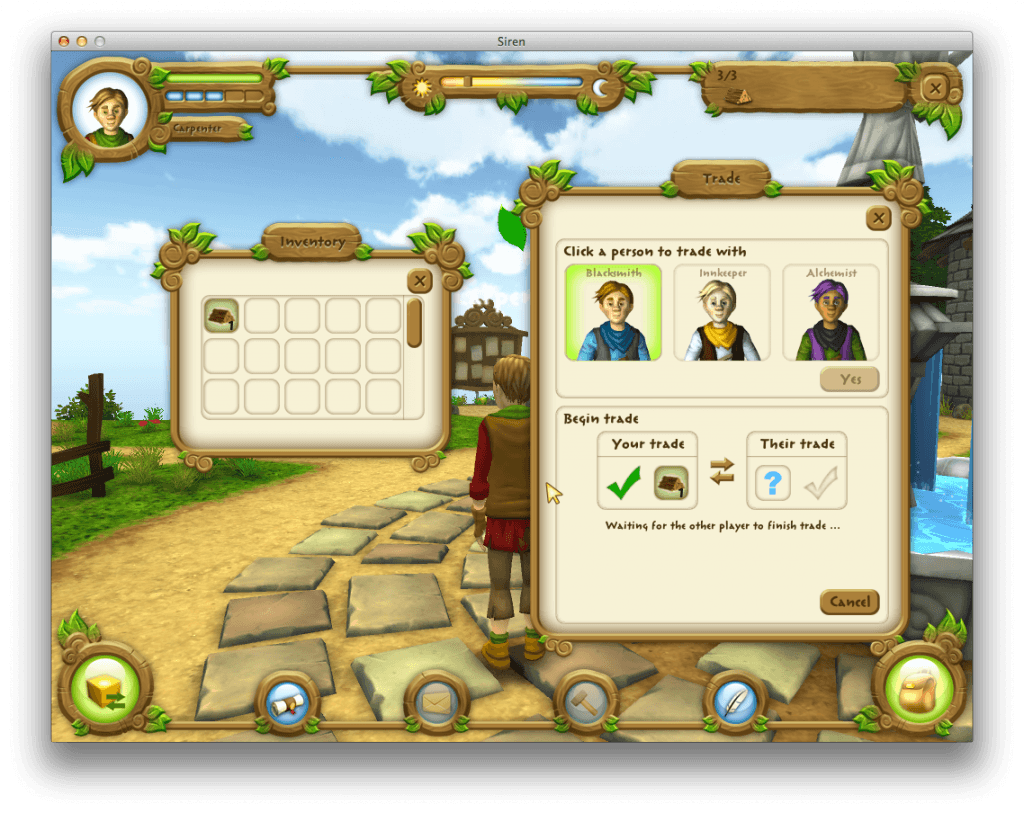
Games are usually poor at provoking emotional responses. Village Voices does exactly that. Khaled told me about one session in a British classroom (the game was tested across Europe). A female student had such an upsetting experience that she cried. After reflecting on the incident with her teacher, the researcher, and the other players, the girl later returned to play again. Khaled thought this was a breakthrough learning moment for the student.
So Village Voices is a good learning tool, and it is also fun to play. But how successful was the team in applying game technologies like procedural content generation and emotion detection to its design? Khaled said that the experience of designing a game primarily for the purpose of testing technological innovations was the hardest part of the project. You might think that the role of a game designer is to work out the best solution to a problem given the technologies at hand. However, when the application of technology is the problem, the relationship between design and technology is more complex. Khaled said that the need to include particular game technologies in the design of Village Voices created a situation much like a rock band that needs to accommodate a peripheral member, such as a violin player. ‘While the violin player is not core to the project, the whole project needs to be compromised in some way in order to show off the violin player’s skills. It is not clear that the violinist is going to help the band make a new hit song, but it is clear he has to be there. So the band tries to find the violin player’s most positive qualities because he has got to be there.’
In Village Voices, the violin player’s best qualities are adaptive technologies that make the player experience more personalised. Because support for emotion detection plug-ins was never actually included in the final prototype, the game instead asks players directly how they feel about events in the game and introduces variations to the player experience according to their responses.
So far we have seen that Village Voices was successful according to the popular opinion of game-design peers at the European Serious Games — it won an award. We have also seen anecdotally that it is a provocative, if not fun game, based on the British student’s emotional response. But what does the SIREN team think about the game?
You cannot sit a child down in front of a computer and hope that they will magically learn something
According to Khaled, it can be difficult to implement learning games in classroom settings, and even more difficult to properly evaluate them. Project funding usually runs dry after around three years, and games take most of that time to develop. Gaining access to schools is also difficult. The game is a good fit for classes like social studies that are often held only once or twice a week. Together with the problem of semester breaks and short evaluation periods, as well as the tendency for teachers to have access to only a few computers often equipped with obsolete hardware, researchers would rarely see students engage with Village Voices over a long period of time. All these things place limitations on the design, testing, and evaluation of games for research purposes.
Rigorous evaluation is important as, ultimately, learning games are not black box tools. You cannot sit a child down in front of a computer and hope that they will magically learn something. That vital learning moment comes when players discuss their in-game experiences. As Khaled explained, ‘Playing the game is just half the experience. The other half is the subsequent discussion of the game experience.’
Given that discussion is so essential to the evaluation process, and that it is so difficult to get a sample of those discussions in a research setting, I asked Khaled if it was possible to turn the discussion into a game as well, to include it as part of the package. Khaled mentioned the meta-game, the part of the game where a player is both playing and watching themselves play the game. It is in the meta-game that players achieve the highest level of reflection. It works well as a kind of after-game discussion, a debriefing for players as they leave behind the conflicts of the game world and return to the everyday life of the school-yard; but Khaled added that of course it could be turned into a game. Achieving this level of reflection in the game package itself is just another challenge for the designers of serious games.
The Institute of Digital Games at the University of Malta offers word-class postgraduate education and research in game studies, design, and technology. The inter-disciplinary team includes researchers from literature and media studies, design, computer science and human-computer interaction. Visit game.edu.mt or contact Ashley Davis (ashley.davis@um.edu.mt) for information about the Institute’s Master of Science (taught or by research) and Ph.D. programmes. This article forms part of The Gaming Issue.
Find out more:
-
Cheong, Y-G., Khaled, R., Yannakakis, G., Campos, J., Paiva, A., Martinho, C., Ingram, G. A Computational Approach Towards Conflict Resolution for Serious Games (full paper). In Proceedings of the 6th International Conference on Foundations of Digital Games, 2011.
-
Khaled, R. and Ingram, G. Tales from the Front Lines of a Large-Scale Serious Game Project (full paper). In the Proceedings of CHI ’12, 2012.
-
Vasalou, A. and Khaled, R. Designing from the Sidelines: Design in a Technology-Centered Serious Game Project. In the Proceedings of the CHI Workshop Let’s talk about Failures: Why was the Game for Children not a Success? CHI ’13, 2013.

